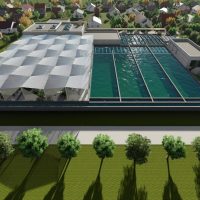Posted on December 18, 2015
The Chinese central government in Beijing released the high-profile Water Pollution Prevention Action Plan, analysed and paraphrased by different famous academic and industrial experts.
See what our Sales & Business Development Manager, Alex Shao has to add!
by Alex Shao, Sales & Business Development Manager, China at Organica Water
Last April the Chinese central government in Beijing released the high-profile Water Pollution Prevention Action Plan, the so-called “Water Ten Rules”. All its details can be found via Baidu with the analysis and paraphrased by different famous academic and industrial experts. Personally I pay extra attention to an interesting piece of information in that action plan:
“…from 2018 on, newly-built public buildings with a floorage of over 20,000 m2 and indemnificatory houses with a floorage of over 20,000 m2 in Beijing, over 50,000 m2 in Tianjin and over 100,000 m2 in Hebei should be equipped with reclaimed water facilities”.
New Opportunity for Real Estate?
“This (decision) was made because we want to select some public, governmental projects as the experimental innovation breakthrough points,” explained WU Shunze, Vice President of Chinese Academy for Environmental Protection Planning (CAEP). It’s encouraging to see the government pushing for innovation, and it is also reasonable to choose the Beijing-Tianjin-Hebei region as the test field given its water water-scarce conditions. If the plan works, it could not only resolve the water scarcity issue in that region, but also turn localization of wastewater treatment and recycling into the new benchmark and standard for wastewater treatment in the real estate industry. This could also be the first domino to fall in the ‘Sponge City’ program (which aims to reduce urban flooding), another hot topic within China’s environmental industry.
Technical Feasibility?
Real estate developers will face a dual mandate of not only maximizing the value of their land, but water reuse as well. This makes applying a conventional activated sludge process in this situation impractical. However there are some proven wastewater treatment processes that allow for a compact design such as membrane technology, IFAS (Integrated Fixed Film Activated Sludge), and FBAS (Fixed-Bed Biofilm Activated Sludge). Additionally, wastewater treatment plants can be built underground or above-ground – in terms of CAPEX, the former option may be much more expensive while the latter can be realized in with the appearance of aesthetic greenhouse gardenurban water gardens, using innovative approaches to minimize OPEX and footprint.
Who will pay the bill for all green wishes?
It would be a great green ambition to achieve on-sitelocalized treatment and reuse of wastewater at every residential district in China. But who will foot the bill? It seems unlikely to be the developers. As a Chinese saying goes, “Sheep’s wool comes off the sheep’s back”; meaning the ultimate check is likely to be paid by the residents themselves, no matter how reluctant they may be. But this will never be a sustainable business model. The PPP model (Public-Private-Partnership) has been a hot topic in the air for many years, and this action plan opens for, as experts claim, 2 trillion RMB of new investment, but where’s the money from? How can the government and social capital come together and to find out a solution for it? We need a profitable win-win solution for all the stakeholders concerning CAPEX and OPEX.
I believe that the solution is ready in the Chinese market. In the coming future it may even be an Apple- or Xiaomi-like trendsetter in China’s water industry.

